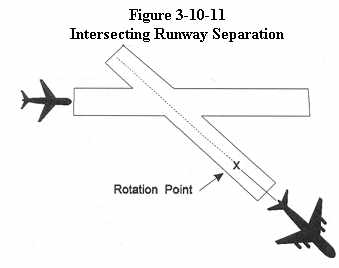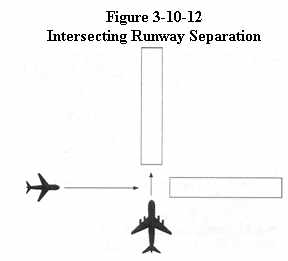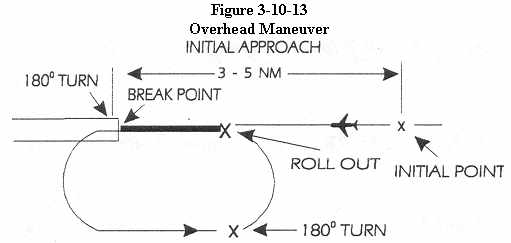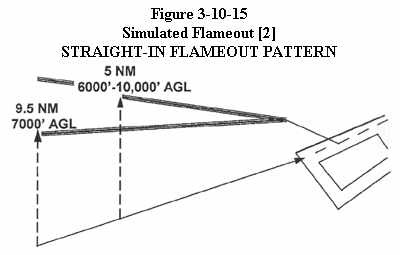
Provide current landing information, as appropriate, to arriving aircraft. Landing information contained in the ATIS broadcast may be omitted if the pilot states the appropriate ATIS code. Runway, wind, and altimeter may be omitted if a pilot uses the phrase "have numbers." Issue landing information by including the following:
NOTE -
Pilot use of "have numbers" does not indicate receipt of the ATIS broadcast.
a. Specific traffic pattern information (may be omitted if the
aircraft is to circle the airport to the left).
PHRASEOLOGY -
ENTER LEFT/RIGHT BASE.
STRAIGHT-IN.
MAKE STRAIGHT-IN.
STRAIGHT-IN APPROVED.
RIGHT TRAFFIC.
MAKE RIGHT TRAFFIC.
RIGHT TRAFFIC APPROVED.
CONTINUE.
b. Runway in use.
c. Surface wind.
d. Altimeter setting.
REFERENCE -
FAAO 7110.65, Current Settings, paragraph 2-7-1.
e. Any supplementary information
f. Clearance to land.
g. Requests for additional position reports. Use prominent geographical
fixes which can be easily recognized from the air, preferably those depicted
on sectional charts. This does not preclude the use of the legs of the
traffic pattern as reporting points.
NOTE -
At some locations, VFR checkpoints are depicted on Sectional Aeronautical
and Terminal Area Charts. In selecting geographical fixes, depicted VFR
checkpoints are preferred unless the pilot exhibits a familiarity with
the local area.
h. Ceiling and visibility if either is below basic VFR minima.
i. Low level windshear advisories when available.
REFERENCE -
FAAO 7110.65, Low Level Windshear Advisories, paragraph 3-1-8.
j. Issue braking action for the runway in use as received from
pilots or the airport management when Braking Action Advisories are in
effect.
REFERENCE -
FAAO 7110.65, Braking Action Advisories, paragraph 3-3-5.
3-10-2 Forwarding Approach Information by Nonapproach Control Facilities
a. Forward the following, as appropriate, to the control facility having IFR jurisdiction in your area. You may eliminate those items that, because of local conditions or situations, are fully covered in a letter of agreement or a facility directive.
1. When you clear an arriving aircraft for a visual approach.
REFERENCE -
FAAO 7110.65, Visual Approach, paragraph 7-4-1.
2. Aircraft arriving time.
3. Cancellation of IFR flight plan.
4. Information on a missed approach, unreported, or overdue
aircraft.
5. Runway in use.
6. Weather as required.
REFERENCE -
FAAO 7110.65, Reporting Weather Conditions, paragraph 2-6-6.
b. When the weather is below 1,000 feet or 3 miles or the highest
circling minimums, whichever is greater, issue current weather to aircraft
executing an instrument approach if it changes from that on the ATIS or
that previously forwarded to the center/approach control.
{New-98-3 Revised February 26, 1998}
a. Separate an arriving aircraft from another aircraft using the same runway by ensuring that the arriving aircraft does not cross the landing threshold until one of the following conditions exists or unless authorized in paragraph 3-10-10, Altitude Restricted Low Approach.
1. The other aircraft has landed and is clear of the runway. Between sunrise and sunset, if you can determine distances by reference to suitable landmarks and the other aircraft has landed, it need not be clear of the runway if the following minimum distance from the landing threshold exists: (See Figure 3-10-1)
REFERENCE -
P/CG TERM - Clear of the Runway.
 |
 |
 |
2. The other aircraft has departed and crossed the runway end. If you can determine distances by reference to suitable landmarks and the other aircraft is airborne, it need not have crossed the runway end if the following minimum distance from the landing threshold exists:
(a) Category I aircraft landing behind Category I or II
- 3,000 feet.
(b) Category II aircraft landing behind Category I or
II - 4,500 feet.
(c) When either is a category III aircraft - 6,000 feet.
(See Figure 3-10-4 and Figure 3-10-5)
 |
 |
WAKE TURBULENCE APPLICATION
{New-98-3 Revised February 26, 1998}
b. Issue wake turbulence cautionary advisories, and the position, altitude if known, and direction of flight of the heavy jet/B757 to aircraft landing behind a departing/arriving heavy jet/B757 on the same or parallel runways separated by less than 2,500 feet.
REFERENCE -
AC 90-23, Pilot Responsibility, paragraph 12.
FAAO 7110.65, Altitude Restricted Low Approach, paragraph 3-10-10.
EXAMPLE -
1 - "Runway Two Seven Left cleared to land, caution wake turbulence,
heavy Boeing 747 departing Runway Two Seven Right."
{New-98-3 Revised February 26, 1998}
2 - "Number two follow Boeing 757 on two-mile final. Caution
wake turbulence."
3-10-4 Intersecting Runway Separation
a. Separate an arriving aircraft using one runway from another
aircraft using an intersecting runway or a nonintersecting runway when
the flight paths intersect by ensuring that the arriving aircraft does
not cross the landing threshold or flight path of the other aircraft until
one of the following conditions exists:
1. The preceding aircraft has departed and passed the intersection/flight
path or is airborne and turning to avert any conflict. (See Figure 3-10-6
and Figure 3-10-7)
 |
2. A preceding arriving aircraft is clear of the landing runway,
completed landing roll and will hold short of the intersection/flight path,
or has passed the intersection/flight path. (See Figure 3-10-8 and Figure
3-10-9)
 |
 |
{New-98-3 Revised February 26, 1998}
b. USAF must secure major command approval prior to conducting Land and Hold Short Operations (LAHSO). An aircraft may be authorized to takeoff from one runway while another aircraft lands simultaneously on an intersecting runway or an aircraft lands on one runway while another aircraft lands simultaneously on an intersecting runway, or an aircraft lands to hold short of an intersecting taxiway or some other predetermined point such as an approach/departure flight path using procedures specified in FAAO 7110.114, Land and Hold Short Operations. The procedure shall be approved by the air traffic manager and be in accordance with a facility directive. The following conditions apply:
NOTE -
Application of these procedures does not relieve controllers from the
responsibility of providing other appropriate separation contained in this
Order.
{New-98-3 Revised February 26, 1998}
REFERENCE -
FAAO 7210.3, Land and Hold Short Operations (LAHSO), paragraph
10-3-7.
 |
1. A simultaneous takeoff and landing operation shall only be
conducted in VFR conditions.
{New-98-3 Revised February 26, 1998}
2. Instruct the landing aircraft to hold short of the intersecting
runway being used by the aircraft taking off. In the case of simultaneous
landings and no operational benefit is lost, restrict the aircraft of the
lesser weight category (if known). LAHSO clearances shall only be issued
to aircraft that are listed in the LAHSO Information Management Systems
(LIMS) and/or FAAO 7110.114, Land and Hold Short Operations, Appendix 1,
whose Available Landing Distance (ALD) does not exceed the landing distance
requirement for the runway condition WET or DRY.
{New-98-3 Revised February 26, 1998}
PHRASEOLOGY -
HOLD SHORT OF RUNWAY (runway number), (traffic, type aircraft
or other information).
NOTE -
Pilots who prefer to use the full length of the runway or a runway
different from that specified are expected to advise ATC prior to landing.
3. Issue traffic information to both aircraft involved and obtain
an acknowledgment from each. Request a readback of hold short instructions
when they are not received from the pilot of the restricted aircraft.
{New-98-3 Revised February 26, 1998}
EXAMPLE -
1 - "Runway one eight cleared to land, hold short of runway
one four left, traffic, (type aircraft) landing runway
one four left."
(when pilot of restricted aircraft responds with only acknowledgment):
"Runway one four left cleared to land, traffic, (type
aircraft) landing runway one eight will hold short of the
intersection."
"Read back hold short instructions."
2 - "Runway three six cleared to land, hold short of runway
three three, traffic, (type aircraft) departing runway
three three."
"Traffic, (type aircraft) landing runway three six will
hold short of the intersection, runway three three cleared
for takeoff."
4. Issue the measured distance from the landing threshold to
the hold short point rounded "down" to the nearest 50-foot increment if
requested by either aircraft.
EXAMPLE -
"Five thousand fifty feet available."
5. The conditions in subparagraphs b2, 3, and 4 shall be met
in sufficient time for the pilots to take other action, if desired, and
no later than the time landing clearance is issued.
{New-98-3 Revised February 26, 1998}
6. Land and Hold Short runways must be free of any contamination
as described in FAAO 7110.114, Land and Hold Short Operations, with no
reports that braking action is less than good.
7. There is no tailwind for the landing aircraft restricted
to hold short of the intersection. The wind may be described as "calm"
when appropriate.
REFERENCE -
FAAO 7110.65, Calm Wind Conditions, paragraph 2-6-5.
{New-98-3 Revised February 26, 1998}
8. The aircraft required landing distances (WET) and (DRY) are
listed in the LIMS database and/or FAAO 7110.114, Land and Hold Short Operations,
Appendix 1.
{New-98-3 Revised February 26, 1998}
9. STOL aircraft operations are in accordance with a letter
of agreement with the aircraft operator/pilot, or the pilot confirms that
it is a STOL aircraft.
WAKE TURBULENCE APPLICATION
{New-98-3 Revised February 26, 1998}
c. Separate IFR/VFR aircraft landing behind a departing heavy
jet/B757 on a crossing runway if the arrival will fly through the airborne
path of the departure - 2 minutes or the appropriate radar separation minima.
(See Figure 3-10-10.)
 |
d. Issue wake turbulence cautionary advisories, the position, altitude if known, and direction of flight of the heavy jet/B757 to:
REFERENCE -
AC 90-23, Pilot Responsibility, paragraph 12.
{New-98-3 Revised February 26, 1998}
1. IFR/VFR aircraft landing on crossing runways behind a departing
heavy jet/B757; if the arrival flight path will cross the takeoff path
behind the heavy jet/B757 and behind the heavy jet/B757 rotation point.
(See Figure 3-10-11.)
 |
{New-98-3 Revised February 26, 1998}
2. VFR aircraft landing on a crossing runway behind an arriving
heavy jet/B-757 if the arrival flight path will cross. (See Figure 3-10-12.)
 |
EXAMPLE -
"Runway Niner cleared to land. Caution wake turbulence, Boeing 757
landing Runway Three Six."
REFERENCE -
FAAO 7110.65, Approaches to Multiple Runways, paragraph 7-4-4.
{New-98-3 Revised February 26, 1998}
a. Issue landing clearance. Restate the landing runway whenever more than one runway is active, or an instrument approach is being conducted to a closed runway.
PHRASEOLOGY -
CLEARED TO LAND,
or
RUNWAY (designator) CLEARED TO LAND.
b. "USN NOT APPLICABLE." Inform the closest aircraft that is cleared to land, touch-and-go, stop-and-go, or unrestricted low approaches when there is traffic holding on the same runway.
EXAMPLE -
"Delta one, cleared to land. Traffic holding in position."
or
"Delta one, runway one eight, cleared to land. Traffic holding in position."
c. USA/USAF/USN. Issue surface wind when clearing an aircraft to land, touch-and-go, stop-and-go, low approach, or the option. Restate the landing runway whenever there is a possibility of a conflict with another aircraft which is using or is planning to use another runway.
PHRASEOLOGY -
WIND (surface wind direction and velocity), CLEARED TO LAND,
or
WIND (surface wind direction and velocity), RUNWAY (designator) CLEARED
TO LAND.
NOTE -
A clearance to land means that appropriate separation on the landing
runway will be ensured. A landing clearance does not relieve the pilot
from compliance with any previously issued restriction.
3-10-6 Anticipating Separation
Landing clearance to a succeeding aircraft in a landing sequence need not be withheld if you observe the positions of the aircraft and determine that prescribed runway separation will exist when the aircraft cross the landing threshold. Issue traffic information to the succeeding aircraft if not previously reported.
EXAMPLE -
"Delta Forty-two cleared to land. Traffic is U.S. Air MD-80 over approach
lights."
REFERENCE -
FAAO 7110.65, Closed/Unsafe Runway Information, paragraph 3-3-2.
3-10-7 Landing Clearance Without Visual Observation
When an arriving aircraft reports at a position where he should be seen but has not been visually observed, advise the aircraft as a part of the landing clearance that it is not in sight and restate the landing runway.
PHRASEOLOGY -
NOT IN SIGHT, RUNWAY (number) CLEARED TO LAND.
NOTE -
Aircraft observance on the BRITE/DBRITE radar display satisfies the
visually observed requirement.
3-10-8 Withholding Landing Clearance
Do not withhold a landing clearance indefinitely even though it appears a violation of Title 14 of the Code of Federal Regulations has been committed. The apparent violation might be the result of an emergency situation. In any event, assist the pilot to the extent possible.
a. Instruct aircraft where to turn-off the runway after landing, when appropriate, and advise the aircraft to hold short of a runway or taxiway if required for traffic.
PHRASEOLOGY -
TURN LEFT/RIGHT (turning point), or
IF ABLE, TURN LEFT/RIGHT (turning point).
and if required
HOLD SHORT OF (runway).
NOTE -
Runway exiting or taxi instructions should not normally be issued to
an aircraft prior to, or immediately after, touchdown.
b. Taxi instructions shall be provided to the aircraft by the
local controller when:
1. Compliance with air traffic control (ATC) instructions will
be required before the aircraft can change to ground control, or
2. The aircraft will be required to enter a taxiway/runway/ramp
area, other than the one used to exit the landing runway, in order to taxi
clear of the landing runway.
EXAMPLE -
"U.S. Air Ten Forty Two, turn right next taxiway, cross Taxiway Bravo,
hold short of Taxiway Charlie, contact ground point seven."
NOTE -
1 - An aircraft is expected to taxi clear of the runway unless otherwise
directed by ATC. In the absence of ATC instructions, an aircraft should
taxi clear of the landing runway even if that requires the aircraft to
protrude into or enter another taxiway/runway/ramp area. This does not
authorize an aircraft to cross a subsequent taxiway/runway/ramp after clearing
the landing runway.
2 - The pilot is responsible for ascertaining when the aircraft is
clear of the runway.
c. Ground control and local control shall protect a taxiway/runway/ramp
intersection if an aircraft is required to enter that intersection to clear
the landing runway.
{New-98-3 Revised February 26, 1998}
REFERENCE -
FAAO 7210.3, Use of Active Runways, paragraph 10-1-7.
d. Request a readback of runway hold short instructions when
not received from the pilot.
EXAMPLE -
"American Four Ninety Two, turn left at taxiway Charlie, hold short
of Runway 27 Right.
"American Four Ninety Two, Roger."
"American Four Ninety Two, read back hold instructions."
NOTE -
Readback hold instructions phraseology may be initiated for any point
on a movement area when the controller believes the readback is necessary.
3-10-10 Altitude Restricted Low Approach
A low approach with an altitude restriction of not less than 500 feet above the airport may be authorized except over an aircraft in takeoff position or a departure aircraft. Do not clear aircraft for restricted altitude low approaches over personnel unless airport authorities have advised these personnel that the approaches will be conducted. Advise the approaching aircraft of the location of applicable ground traffic, personnel, or equipment.
NOTE -
1 - The 500 feet restriction is a minimum. Higher altitudes should
be used when warranted. For example, 1,000 feet is more appropriate for
heavy aircraft operating over unprotected personnel or small aircraft on
or near the runway.
2 - This authorization includes altitude restricted low approaches
over preceding landing or taxiing aircraft. Restricted low approaches are
not authorized over aircraft in takeoff position or departing aircraft.
PHRASEOLOGY -
CLEARED LOW APPROACH AT OR ABOVE (altitude). TRAFFIC (description and
location).
REFERENCE -
FAAO 7110.65, Vehicles/Equipment/Personnel on Runways, paragraph 3-1-5.
FAAO 7110.65, Traffic Information, paragraph 3-1-6.
FAAO 7110.65, Light Signals, paragraph 3-2-1.
FAAO 7110.65, Timely Information, paragraph 3-3-3.
FAAO 7110.65, Takeoff Position Hold, paragraph 3-9-4.
FAAO 7110.65, Same Runway Separation, paragraph 3-10-3.
Approve/disapprove pilot requests to remain in closed traffic
for successive operations subject to local traffic conditions.
PHRASEOLOGY -
LEFT/RIGHT (if required) CLOSED TRAFFIC APPROVED. REPORT (position
if required),
or
UNABLE CLOSED TRAFFIC, (additional information as required).
NOTE -
Segregated traffic patterns for helicopters to runways and other areas
may be established by letter of agreement or other local operating procedures.
REFERENCE -
FAAO 7110.65, Runway Proximity, paragraph 3-7-4.
FAAO 7110.65, Takeoff Position Hold, paragraph 3-9-4.
FAAO 7110.65, Same Runway Separation, paragraph 3-10-3.
Issue the following to arriving aircraft that will conduct an
overhead maneuver:
a. Pattern altitude and direction of traffic. Omit either or
both if standard or when you know the pilot is familiar with a nonstandard
procedure.
PHRASEOLOGY -
PATTERN ALTITUDE (altitude). RIGHT TURNS.
b. Request for report on initial approach.
PHRASEOLOGY -
REPORT INITIAL.
c. "Break" information and request for pilot report. Specify
the point of "break" only if nonstandard. Request the pilot to report "break"
if required for traffic or other reasons.
PHRASEOLOGY -
BREAK AT (specified point).
REPORT BREAK.
d. Overhead maneuver patterns are developed at airports where aircraft have an operational need to conduct the maneuver. An aircraft conducting an overhead maneuver is on Visual Flight Rules (VFR) and the IFR flight plan is canceled when the aircraft reaches the "initial point" on the initial approach portion of the maneuver. The existence of a standard overhead maneuver pattern does not eliminate the possible requirement for an aircraft to conform to conventional rectangular patterns if an overhead maneuver cannot be approved.
NOTE -
Aircraft operating to an airport without a functioning control tower
must initiate cancellation of the IFR flight plan prior to executing the
overhead maneuver or after landing.
 |
EXAMPLE -
"Air Force Three Six Eight, Runway Six, wind zero seven zero at eight,
pattern altitude six thousand, report initial."
"Air Force Three Six Eight, break at midfield, report break"
"Air Force Three Six Eight, cleared to land."
"Alfa Kilo Two Two, Runway Three One, wind three three zero at one
four, right turns, report initial."
"Alfa Kilo Two Two, report break."
"Alfa Kilo Two Two, cleared to land."
e. Timely and positive controller action is required to prevent a conflict when an overhead pattern could extend into the path of a departing or a missed approach aircraft. Local procedures and/or coordination requirements should be set forth in an appropriate Letter of Agreement, facility directive, base flying manual etc., when the frequency of occurrence warrants.
3-10-13 Simulated Flameout (SFO) Approaches / Practice Precautionary Approaches.
a. Authorize military aircraft to make SFO/practice precautionary
approaches if the following conditions are met:
1. A letter of agreement or local operating procedure is in
effect between the military flying organization and affected ATC facility.
(a) Include specific coordination, execution and approval
procedures or the operation.
(b) The exchange or issuance of traffic information as
agreed to in any interfacility letter of agreement is accomplished.
(c) Include a statement in the procedure that clarifies
at which points SFO's may / may not be terminated. (See Figure 3-10-14).
2. Traffic information regarding aircraft in radio communication
with or visible to tower controllers which are operating within or adjacent
to the flameout maneuvering area is provided to the SFO aircraft and other
concerned aircraft.
3. The high-key altitude or practice precautionary approach
maneuvering altitudes of the aircraft concerned are obtained prior to approving
the approach. (See Figure 3-10-14).
NOTE -
1 - Practice precautionary / flameout approaches are authorized
only for specific aircraft. Precautionary approaches, however, might be
made by any aircraft when engine failure is considered possible. The practice
precautionary approach maneuvering area / altitudes may not conform to
the standard flameout maneuvering area altitudes.
2 - Simulated flameout approaches generally require high descent rates.
Visibility ahead and beneath the aircraft is greatly restricted.
3 - Pattern adjustments for aircraft conducting SFO's may impact the
effectiveness of SFO training.
REFERENCE -
FAAO 7110.65, Low Approach and Touch-and-Go, paragraph 4-8-12.
FAAO 7610.4, paragraph 9-37.
b. For overhead simulated flameout approaches:
1. Request a report at the entry point
PHRASEOLOGY
REPORT (high or low) KEY (as appropriate)
2. Request a report at low key.
PHRASEOLOGY -
REPORT LOW KEY.
3. At low key, issue low approach clearance or alternate instructions.
REFERENCE -
FAAO 7110.65, Sequencing/Spacing Application, paragraph 3-8-1.
FAAO 7110.65, In-Flight Emergencies Involving Military Fighter-Type
Aircraft, paragraph 10-1-7.
FAAO 7610.4, paragraph 9-37
c. For straight-in simulation flameout approaches:
1. Request a position report from aircraft conducting straight-in
SFO approaches.
PHRASEOLOGY -
REPORT (distance) MILK SFO FINAL.
Figure 3-10-14
Simulated Flameout [1]
FLAMEOUT PATTERN
 |
 |